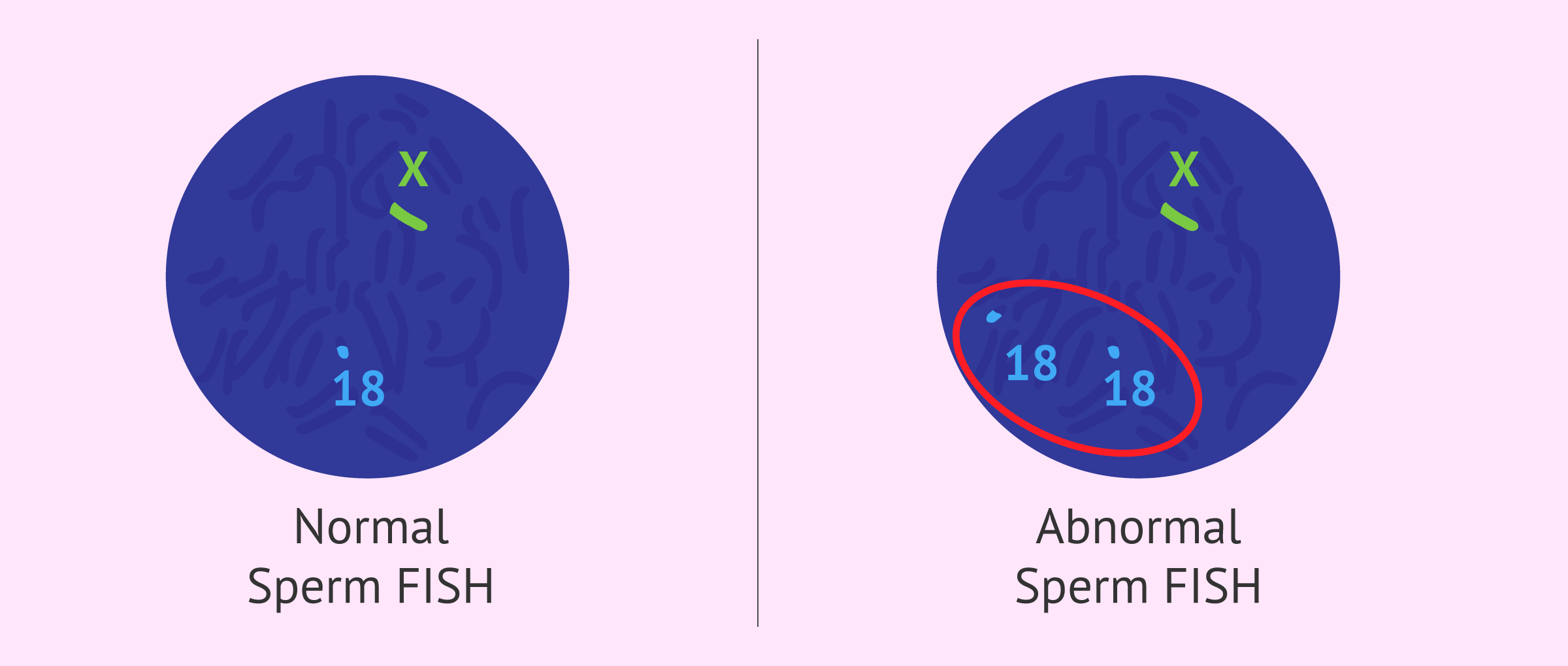Fluorescent In Situ Hybridization (FISH) of sperm is a complementary test for the study of male fertility. It is a cytogenetic technique that uses fluorescent DNA probes to mark specific chromosomes in sperm. The aim of FISH is to identify whether the chromosome content of the sperm is correct.
Usually, the FISH technique is used to analyze chromosomes 13, 18, 21, X and Y, since these are the chromosomes that usually have the most alterations. However, FISH can also be used for other chromosomes.
A normal FISH result would show only one signal for each chromosome. On the other hand, an altered FISH would correspond to the visualization of several signals for the same chromosome.
Read the full article on: Male Fertility Testing – How Do You Know if You Are Infertile? ( 69).
By Claudia Flores M.D. (gynaecologist), Elena Santiago Romero M.D. (gynecologist), Marta Barranquero Gómez B.Sc., M.Sc. (embryologist), Patricia Recuerda Tomás B.Sc., M.Sc. (embryologist), Sara Salgado B.Sc., M.Sc. (embryologist), Sergio Rogel Cayetano M.D. (gynecologist) and Michelle Lorraine Embleton B.Sc. Ph.D. (biochemist).
Last Update: 08/18/2022
